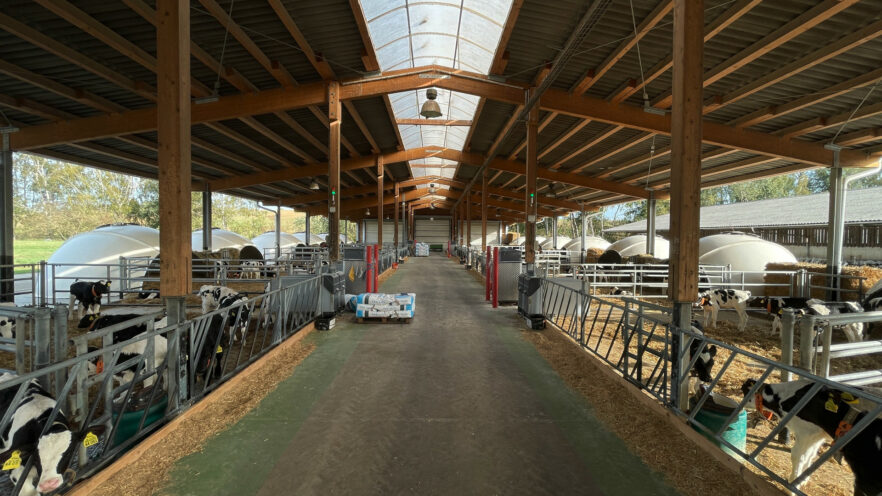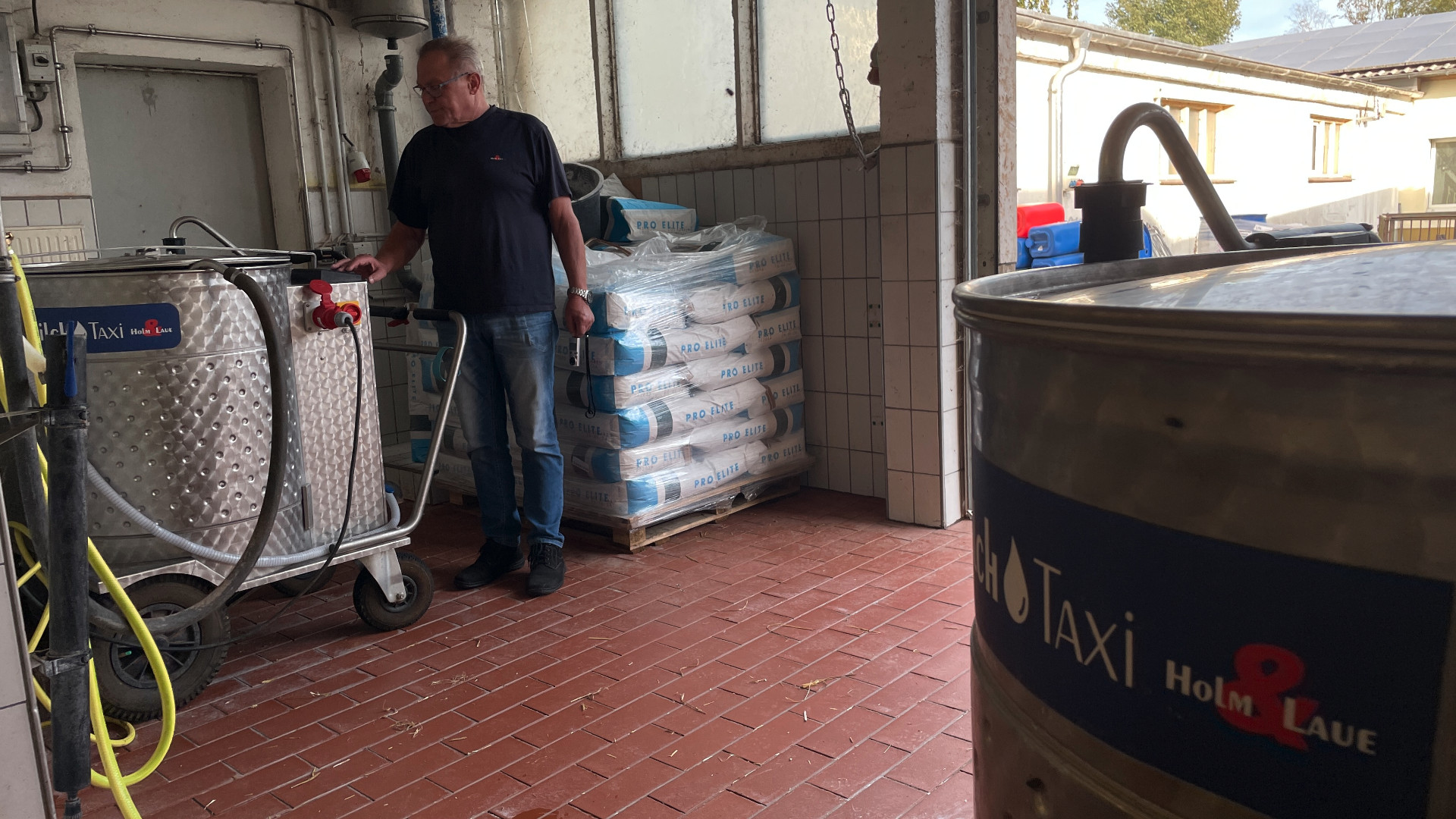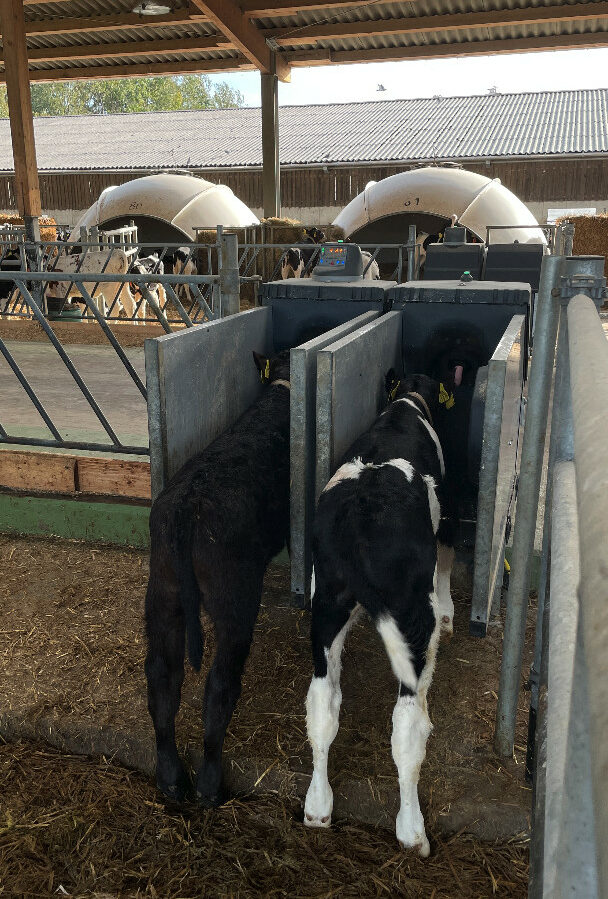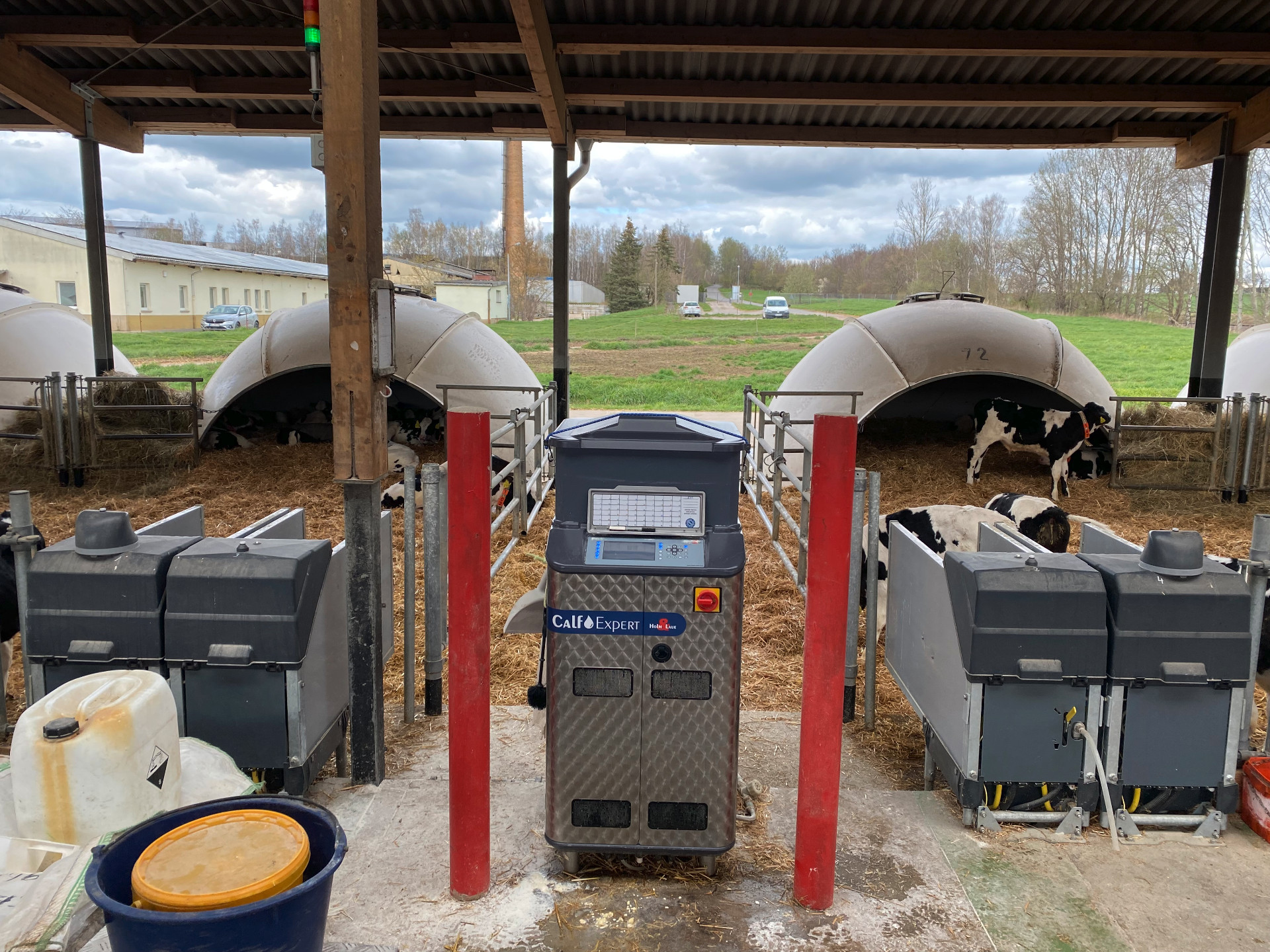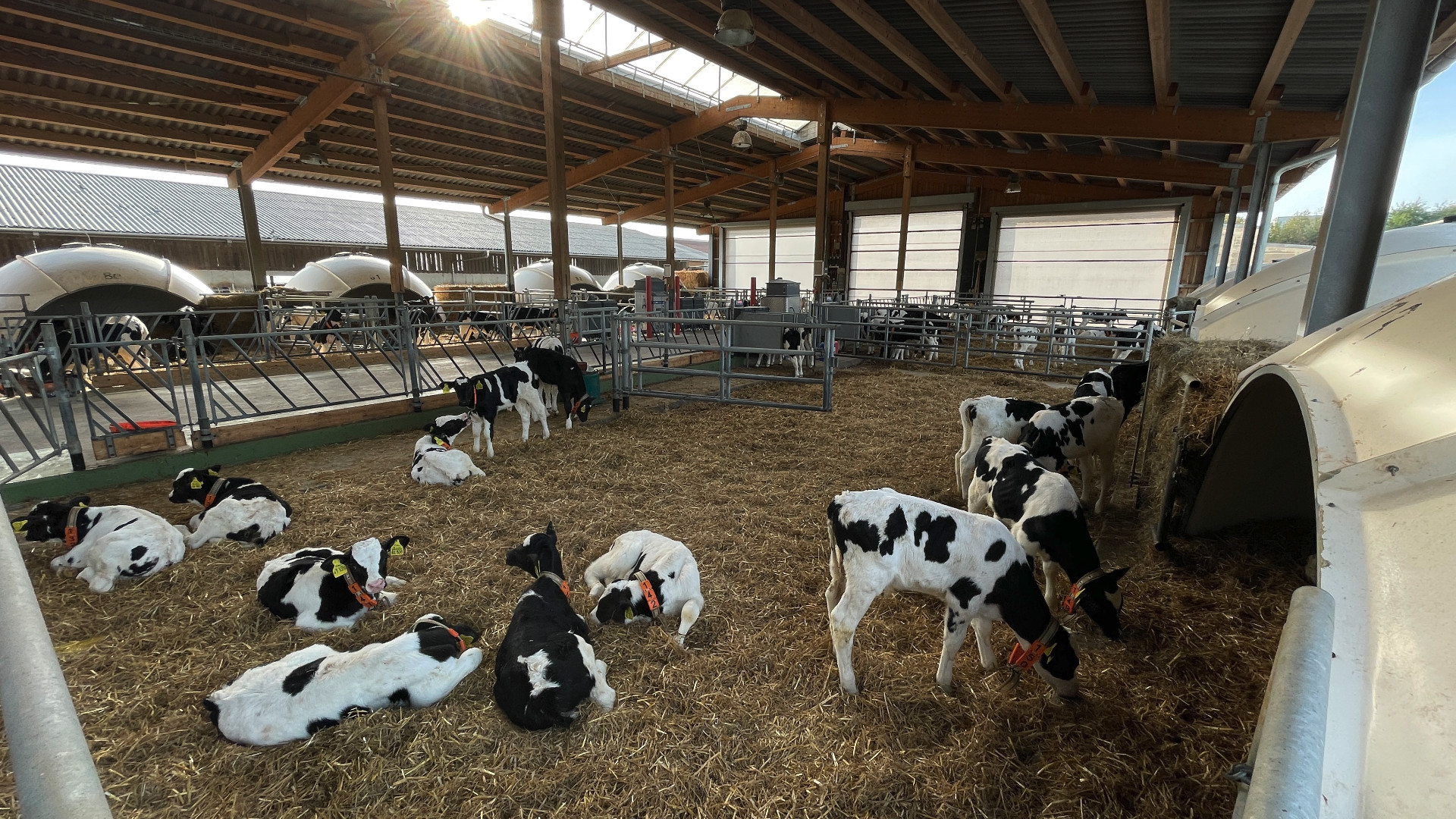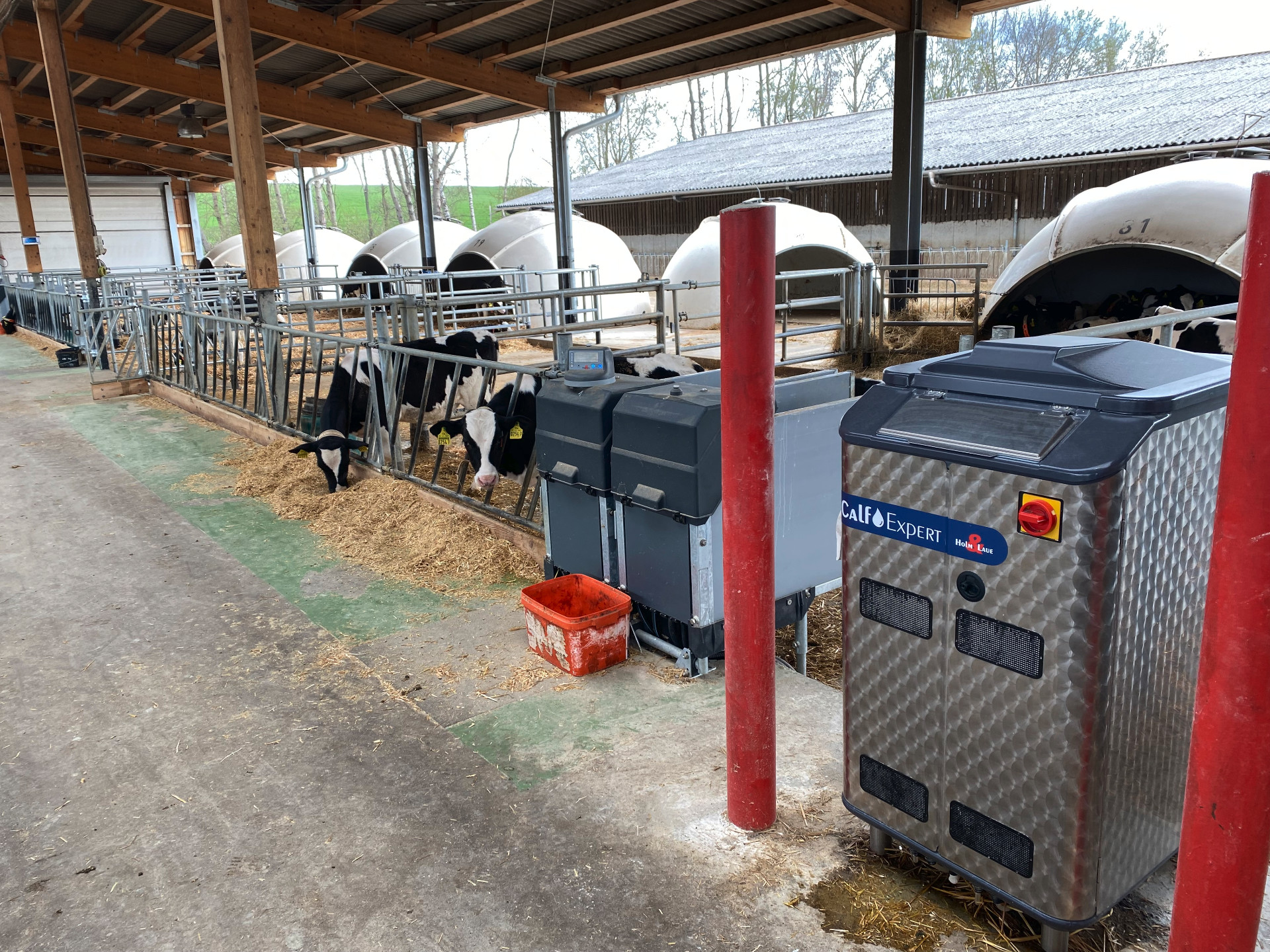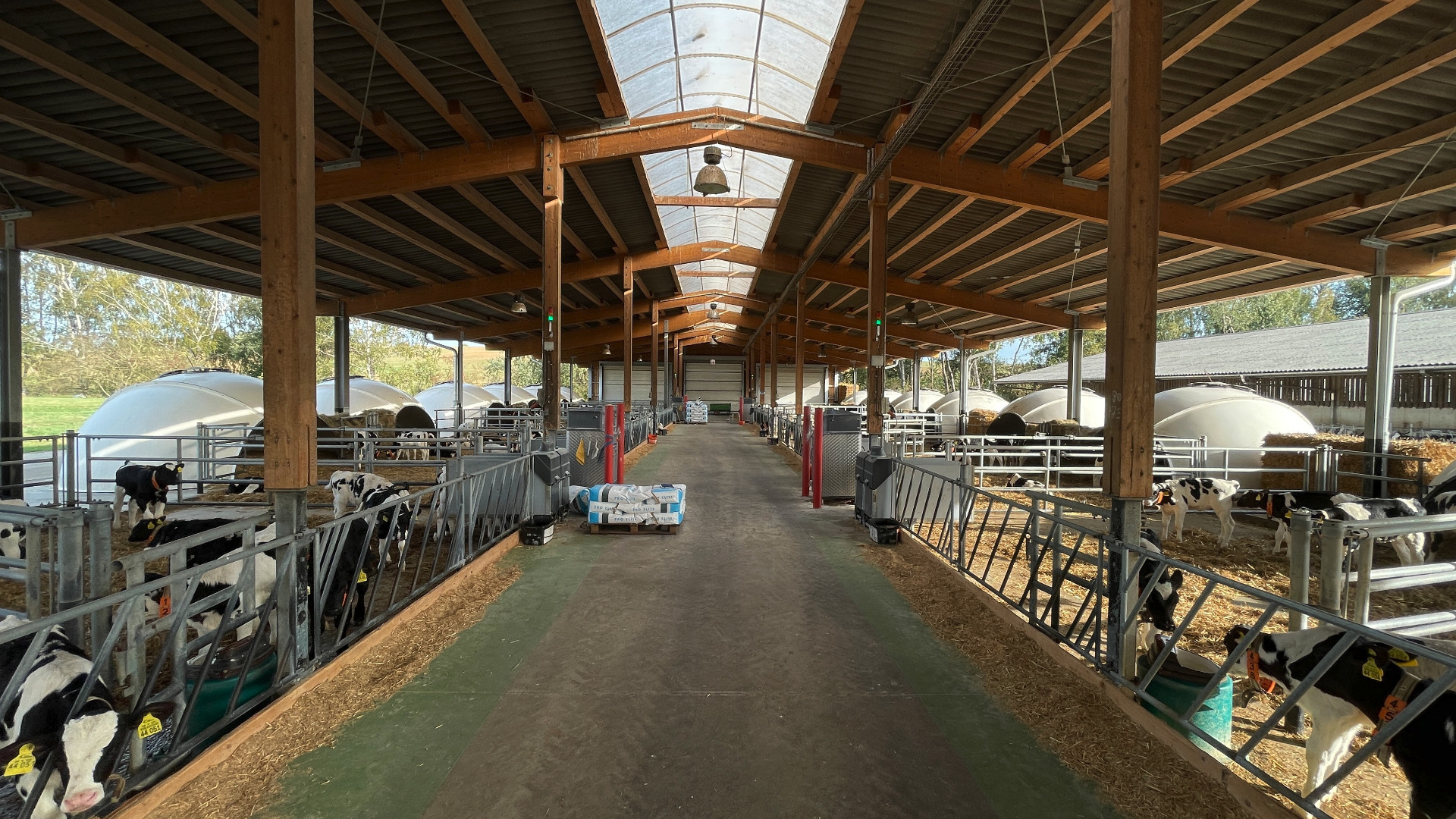Over 1,000 g daily weight gain thanks to CalfExpert
1. März 2024 — General Information, Calf Feeding, Practice report, Calf feeders — #CalfExpert #IglooSystem #MilkTaxi #WeightControl #GainsFarm manager Laura Bühring tells us about the daily routine of calf rearing at the agricultural business Starbach-Sachsen eG in Bodenbach near Nossen, a good half hour's drive west of Dresden, and how impressed she is with the CalfExpert feeding system.
This article is about
A new calf barn with 16 H&L large-capacity igloos was erected here 8 years ago. Four CalfExpert feeders have now been in use since the beginning of the year.

The large number of births and the fact that male and female calves are reared together allows for very similar group sizes. Two HygieneStations per group are used to with two large-capacity igloos to rear up to 30 calves. The age difference is rarely more than a week.
Regular work routines
The team of 30 staff on the farm includes two full-time calf attendants, who are assisted by employees from the reproduction area in the calf barn. Two employees tend to the animals during the early shift. In the afternoon and at night, the calf area is then only monitored by the employees from the reproduction unit
The calf attendants take care of the calves in the group housing first thing in the morning. Their first task is to lead newly born calves and animals that did not feed during the night to the feeder stations. This means that the first thing they do is look at the alarm list in the calf feeder, which provides this information at a glance. The process also includes a health check.
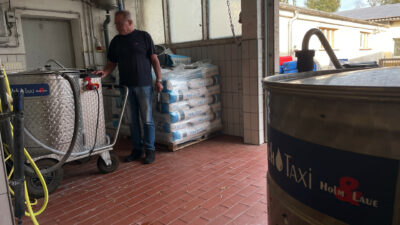
The next stage takes the attendants to the very young calves, which are housed in individual pens. Four compartments each with 18 individual boxes need to be serviced. All newborn calves receive four litres of colostrum with their first feed. The second and third feeds then consist of a colostrum mixture, and from the fourth feed onwards the calves are given 60% skimmed milk replacer. They are then fed four litres twice a day from two MilkTaxis.
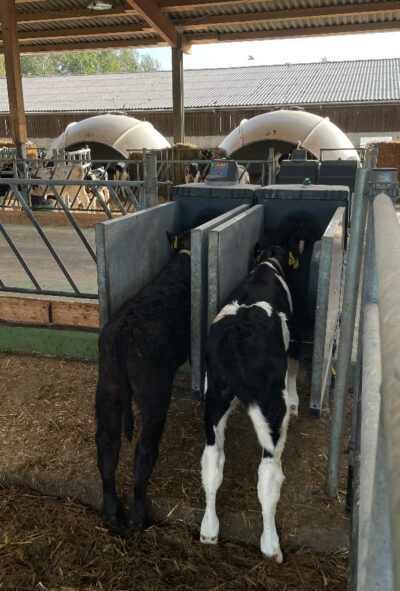
The process of moving calves from one barn to another is carefully planned
From the age of 7 to 10 days, the calves join a group and are fed 40% skimmed milk powder from the calf feeder. On the day they are moved, they are given two litres of water in their individual boxes early in the morning, transferred to the group during the morning and led to the HygieneStation. Where necessary, the calves are led to the feeders the next morning and then again at midday, which means they are given a total of up to three training sessions. However, this is not necessary for around 60 % of calves. The feeder lists show that the calves have already visited the station independently on the second day. So even very young calves can be accustomed to feeding from calf feeder.
Weight gains increased immediately
The calves are weighed directly after birth. A second weighing takes place when the calves are moved from K0 to the Igloo barn and then again after they are weaned when they have moved to the barn for young cattle. Bull calves are transferred to the fattening facility, where they are weighed in a group weighing process. When the female animals are three to four months old, they move to the young cattle shed at another site run by the co-operative and then return to Nossen when they are in full gestation.
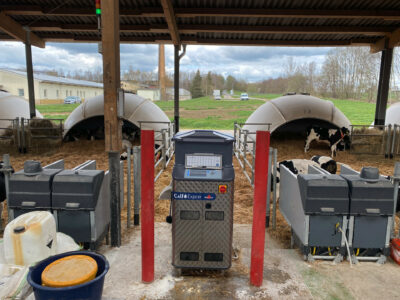
Holm & Laue's partner AUL eG, Melktechnik Lauterbach installed the first CalfExpert automatic feeders on the farm in Nossen at the end of last year. Daily weight gains started to rise as soon as the system was put into operation: from 850 g to 950 g immediately after the changeover and then soon to over 1,000 g per day.
Laura Bühring already had many years of experience with automated calf feeders, but now the calves have the opportunity to consume 14 litres per day and four litres on each visit thanks to the new CalfExpert feeders. The fact that the calves always receive milk because of QuadroFlex results in excellent growth. The preparation of the calf milk is set at 150 g of CMR per litre of feed.
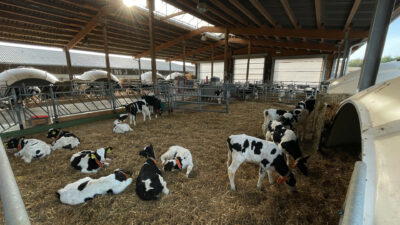
The automated weaning process begins on the 50th day after birth and ends at 70 days. Laura Bühring always offers her animals self-mixed dry feed (molasses, straw, mineral, maize and rapeseed meal) to help with weaning. She starts with this immediately after calves are transferred to the group pen. When the calves are weaned, they naturally start to eat plenty of dry feed despite the high quantities of liquid.
Laura's top 11 benefits of the CalfExpert feeder
- QuadroFlex allows up to four calves to be fed simultaneously at each feeder, making it much easier to train larger groups. In addition, Holm & Laue's CalfExpert solution works without any complex technology.
- All calves always have credit and are not subjected to adverse conditioning.
- A high degree of flexibility: each calf can be fed individually.
- Simple monitoring: it is easy to see how much each calf has consumed at any time.
- LED teat lighting shows the calves the way to the feed trough, even at night.
- Greater work efficiency compared to feeding by bucket.
- The integrated forest protection is a great advantage in winter as an igloo village is very well ventilated.
- Viewing calf lists and operating the calf feeder are extremely user-friendly.
- Key information can be quickly visualised.
- The fact that the feeder is connected to the Internet brings a number of benefits:
- if an employee encounters a problem operating the system, Laura can access it from her computer at home to provide further assistance.
- She can also easily adjust the feeding curves.
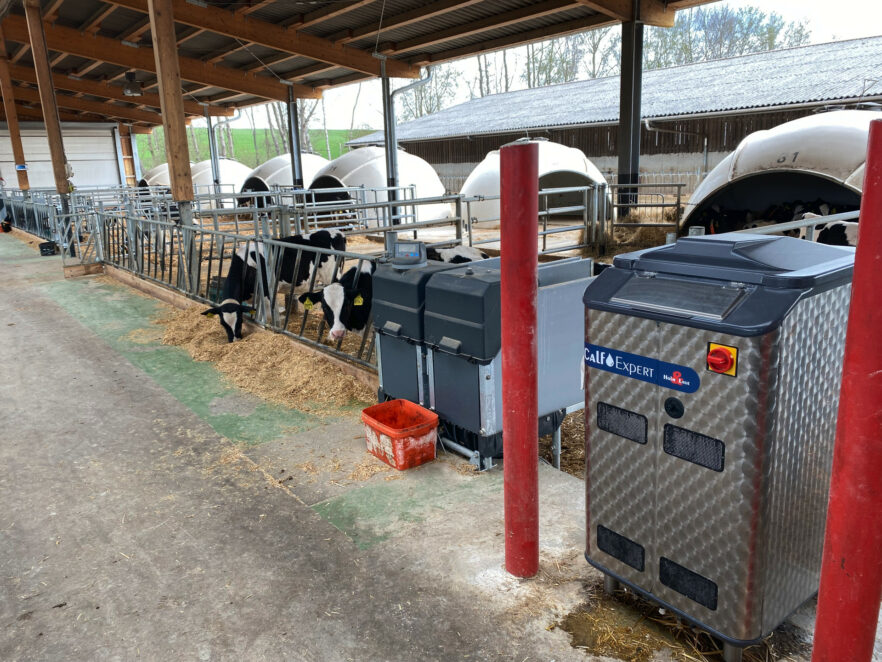
Is there anything else, Laura?
At the end of our visit, Laura Bühring has some tips for other CalfExpert users, as well as praise and ideas for improvement for us:
The exterior of a HygieneStation should be cleaned every two days to maintain a high level of hygiene. The Nossen dairy farm uses an udder spray and occasionally a foam cleaner for this purpose.
The new QuickDrain system, where we fit the feeder with an inclined stainless steel plate, is a significant improvement - saliva and milk residues are easily rinsed away, making the situation with the HygieneStation almost perfect.
It would be great if the current flow rates of the QuadroFlex sensors could be shown on the display. This would enable employees to detect any blocked pipes more quickly, assess the calves' current drinking behaviour much better and identify sick calves at an early stage.
We are always delighted to receive this type of feedback from the field. This is the only way we can ensure that our products continue to develop effectively for the benefit of calves, people and farms. Thank you, Laura!
